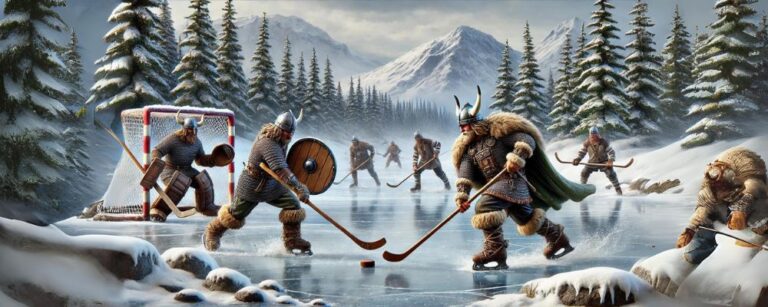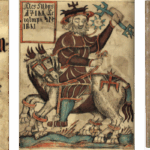We often think of sports as a modern concept, used to blow off physical steam now that we no longer work physically demanding jobs or get the thrill of battle.
But we know that sports are in fact an ancient concept.
The modern Olympics are based on the Greek tradition that included sports such as the marathon and wrestling.
But it wasn’t just the ancient Greeks who enjoyed watching a good game.
Sports were also an important part of Viking culture.
The big difference is that they didn’t have the same rules to protect the health of the players. Viking sports were often bloody and could be deadly.
Viking sports were about developing skills and sharpening abilities, and then testing them in competition.
Competing also allowed the Vikings to rank themselves against one another in terms of strength, endurance, and cunning.
But just like modern sports, these competitions were as much for the spectators as they were for the participants.
Glima Wrestling
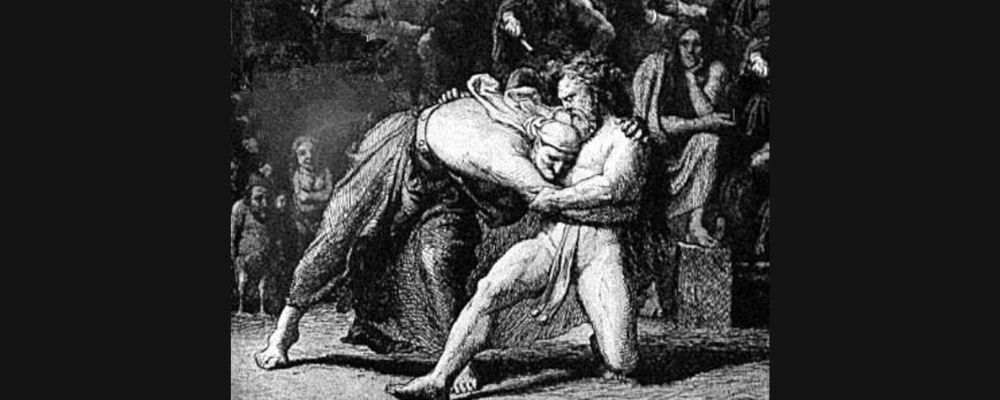
A popular sport in the Viking age was wrestling, called Glima, or sometimes Fang.
The sport has been played pretty much continuously since the Viking Age, with the Glima Association of Iceland (Glimusamband Islands) keeping a record of competition for centuries.
The aim of the modern game is to grab the opponent around the waist and throw them to the floor, using technique rather than just force.
Glima fights appear in the sagas. In Bardar saga Snaefellsass glima matches conducted indoors in a longhouse are described.
There were also notable outdoor games with big groups of spectators, such as the games at the spring assembly at Hegranesthig mentioned in Grettis saga, and during the Althing at Fangabrekka at Thingvellir, mentioned in Viga-Glums saga.
In Grettis Saga we are told that Grettir was known to be very strong, but no one knew just how strong because he had not been seen competing in the Glima.
This was clearly seen as a forum to show off your strength, as when Thorgeirr asked Finnbogi to perform a feat of strength in the Finnboga saga, Finnbogi asked the other man if he would like to see him wrestle.
Thor is challenged to a wrestling match when he visits the hall of Utgard-Loki in Jotunheim.
But despite being the strongest of the Norse gods, he loses to his opponent, Elli, who looks like an old woman. But she is the personification of old age, and no one can fight the inevitability of age.
That this scene is based on contemporary wrestling is seen in the fact that Elli initially throws the god using a technique called bragd, unbalancing him, and then trying to finish him with a specific throw called sviptingar.
This causes Thor to fall to one knee, and when it touches the ground, he had lost the fight.
In the Icelandic law book Gragas from 1117, the legal text makes it clear that everyone who trains to wrestle does so at their own risk, and that no athlete can blame others for injuries that occur during training unless it can be proved that it was deliberate.
Heavy Lifting

Lifting heavy objects, familiar from modern Olympic competitions, also seems to have been a Viking sport. In the end, Finnbogi did not wrestle, but instead lifted a stone to show is strength. Grettir also listed a stone so large that those watching were astonished as a show of his strength.
This is also seen in the story of Thor’s trip to Jotunheim.
There, in the hall of Utgrad-Loki, he is challenged to life a cat to show off his strength.
While this seems like an easy feat, Thor is unable to complete the task because the cat is actually the serpent Jormungandr, disguised by an illusion.
Thor is hard-pressed to lift just one paw from the ground.
Later the giant reveals the rouse to Thor and explains that even this small feat almost destabilized the world because the serpent is so enormous.
Jormungandr lives in the waters surrounding Midgard and is so large that he can encircle the whole world and hold his tail in his mouth.
Orm Storolfsson, who lived in Iceland in around 1000, was a famous strongman who walked three steps with the mast of Omrinn Langi, a famous Viking longship, that weighed 650 kilograms and was ten meters long.
The story says that it took 50 men to place the ship mast on his shoulder.
He is also said to have never walked again after performing this incredible feat.
Knattleikr Ball Games
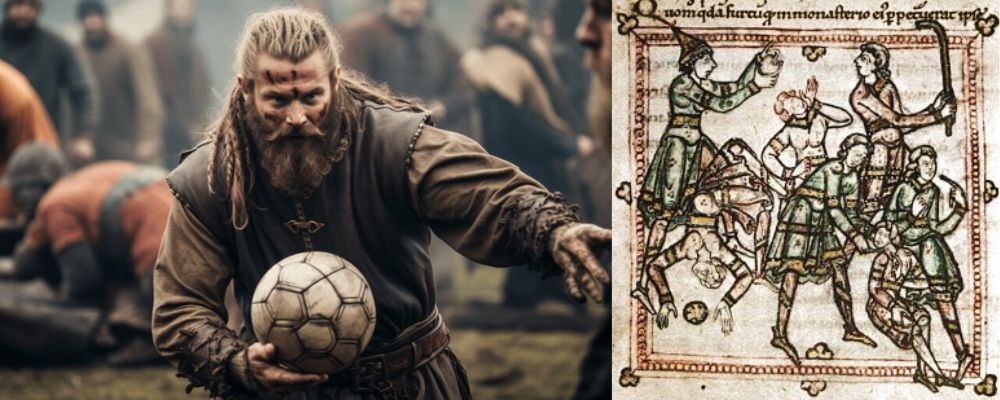
We know from the sources that the Vikings also enjoyed a ball game called Knattleikr, though what exactly it looked like is unclear.
It is mentioned in five of the surviving Icelandic sagas.
In Grettis saga, the men of Midfirth Water decide to organize a game and invite not just the men from their own village, but also from the nearby villages of Willowdale, Westhope, Waterness, and Ramfirth for a competition.
Men were paired off based on their size and strength, and we are told that the 14-year-old hero Grettir was paired with a boy several years older.
Grettir gets angry when the older, and presumably taller, boy hits the ball over his head and it slides away over the ice so he must retrieve it.
He does, and when he is back in the field of play close to his opponent, he hurls it against the other boy’s forehead, hard enough to break the skin. From there, the game devolved into a wrestling match.
While this implies that it was a game of one-on-one, in Gisla saga, we see a ball game at Sedgetarn which attracted a great many players, making it challenging to divide them into two fairly equal sides
This game also seems to have been played on icy ground and to have gotten violent.
Gisla through an opponent Thorgrim onto the ground so hard that the skin came off his knuckles and the flesh off his knees, and blood gushed from his nostrils.
Later Gisli and Thorstein played a match against Bork and Thorkel. A host of men eager to see the sport came to watch.
Modern reconstructions suggest that there were two opposing sides, each wielding wooden bats that were used to hit a smallish hardball.
Aside from that, there seem to have been few rules, with players hitting and tackling one another, passing or carrying the ball, and doing whatever it takes to win.
It is unclear whether the original game was played between two individuals, pairs, or larger teams, as all cases are mentioned in the sources.
In some cases, the game may have been played on ice, but this may have depended on the time of year.
It was certainly a game loved by spectators. In Vopnfirdinga saga they described several slopes of spectators looking down on the field.
Swimming
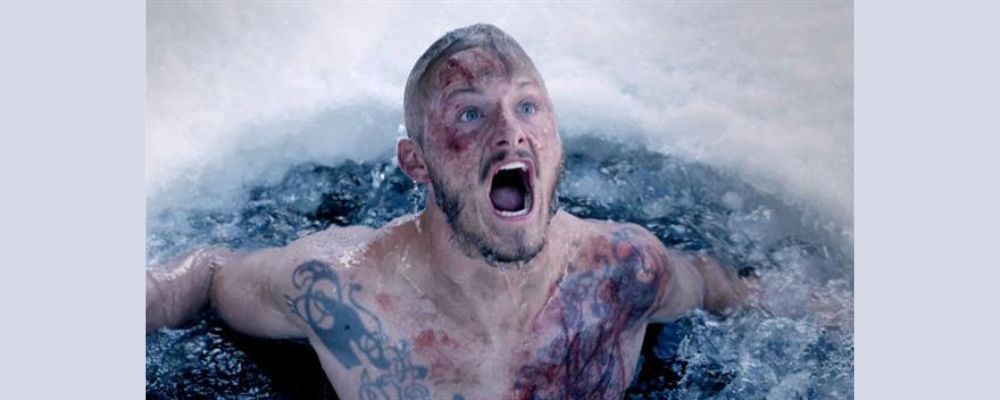
Living in an area of the world full of fjords and being avid sailors, it is no surprise that the Vikings took pride in their swimming abilities and had swimming competitions.
But rather than a test of speed, who can get from point A to point B the fastest, their competitions seemed more like water wrestling.
They would duck and drown each other, using strength to hold their opponent underwater.
In the Magnussona saga, when the kings Eysteinn and Sigurd compared their accomplishments, Sigurd told Eysteinn that he could “duck him” whenever he wanted, perhaps suggesting the two had previously competed in this kind of competition.
In the Laxdaela saga, Kjartan competed against an opponent whom he later learned was King Olaf or Norway.
The king was impressed by Kjartan’s abilities and asked him if he had similar skills in other sports.
Running
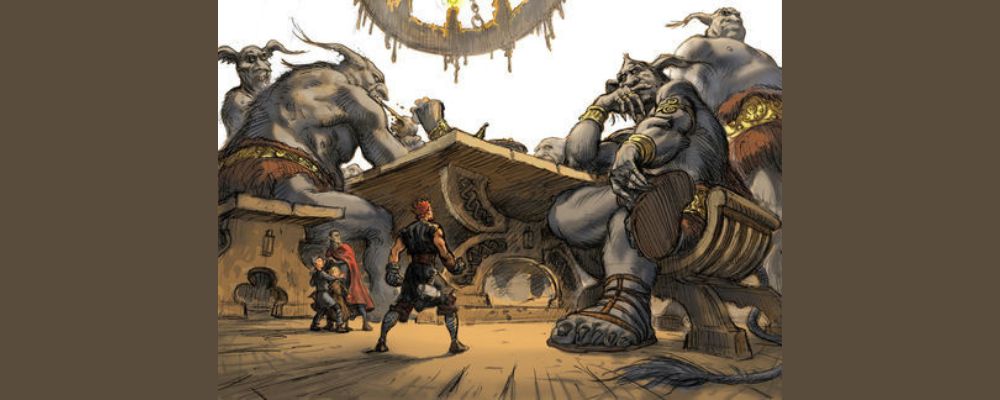
The Vikings may also have participated in running competitions.
In the story of Thor in Jotunheim, his servant Thjalfi is convinced to compete in a running competition against a small figure called Hugi.
He was badly defeated three times because Hugi was the personification of thought, and you can’t outrun your thoughts.
Magnussona saga also records a drunken bet between the king’s son Magnus and a man from Ireland who claimed that the king was also his father.
They decide to race to determine the best man.
Games and Things
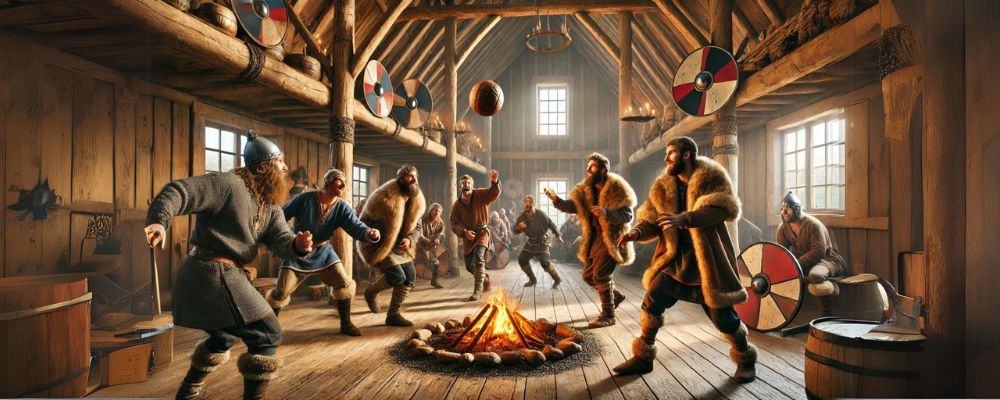
The Vikings also engaged in activities probably better described as games than sports.
The kinds of activities that might be familiar on a children’s sports day.
They had a version of dodgeball called Hnutukast, which means bone throwing.
They would throw bones at one another after the evening meal in the longhouse with the hope of hitting others in the room.
They also had a version of Piggy-in-the-middle called Skinnleikr.
Again, played indoors, they used a rolled-up animal skin as a ball and threw it between themselves, with another player in the middle trying to intercept it.
Toga honk, or tug-of-war, was also plated, with the aim being to pull the other competitor across a line, much like in the modern game.
Viking Sports
These tidbits of information that survive probably only reflect a fraction of the role that sports played in the Viking world.
Sports were probably so commonplace that there rarely seemed a need to mention them.
In most cases, they only appear in the sagas as a way to demonstrate the strength and ability of a hero or act as a backdrop for conflict.
The ancient Vikings would probably feel very “at home” cheering for a hockey team, training to fight MMA, or disputing a foul call with an umpire.
